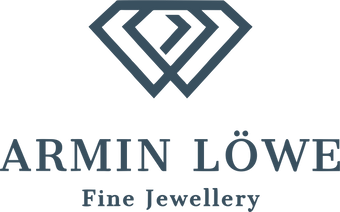History of Ireland - the meaning behind the symbols
 Circle of Life
Circle of LifeNo beginning... the unwinding path, symbolised by a Celtic swirl similar to those carved
in stone by our ancestors some 5,000 years ago. The diversity of the earliest settlers
on our island has over time formed a culture that is rich in heritage, beliefs and
tradition that has passed down from generation to generation a sense of life, faith and
hope against whatever we have faced and wherever we have found our place.
…and no end. The unwinding path that we are to this day travelling upon, a never ending
journey into the unknown future.
 St. Patrick
St. PatrickSaint Patrick - Ireland’s patron saint, in the 5th Century helped transform Ireland from a
land of pagan illiteracy into one known as a haven of learning, culture and Christianity.
A heritage we are known for to this day and which is celebrated internationally every year
on the 17th March.
 Round Towers
Round TowersThese magnificent stone structures proudly stand as enduring images of the Christian faith
in Ireland having provided refuge from invaders for the religious community and their
precious relics between the 9th and 12th centuries.
 Vikings
VikingsA race known for their plundering sprees across the high seas. Viking raids (first
recorded in 795) were at first small and intermittent, but over the following decades
they intensified in number and ferocity until the invaders found permanent
settlements that irrevocably changed the landscape and society of Gaelic Ireland.
 Norman Invasion
Norman InvasionOur history of invasion continued, albeit at the request of an exiled King of Leinster,
who sought assistance in regaining his throne. And while the Norman-French army landed
in Ireland and were soon victorious ultimately Henry II fearing this rival Norman state
may threaten the English throne, led his troops into Ireland in 1171, forcing the Irish
Kings to submit to his authority.
 Battle of the Boyne
Battle of the BoyneThe Battle of the Boyne was fought in 1690 between the Catholic King James II and his
nephew and son-in-law the Protestant King William of the Dutch House of Orange. There
were three issues at stake at the battle: The Throne of England, French Dominance of
Europe and power in Ireland. This battle is regarded as central in the struggle between
the Irish Protestant and Catholic communities as it protected the dominance of Protestant
interests in Ireland for centuries to come.
 United Irishmen
United IrishmenA century later the great religious divide was still dominating the country as the catholic
community sought more rights feeling that religious division was being used for gain by the
ruling elite. The ultimate goal for the United Irishmen was to separate religion from
politics. The movement was banned in 1793 by the authorities as it grew in popularity but
became defunct by 1803 primarily due to three months of sustained and bloody violence
following the rising of 1798.
 Irish Flag
Irish FlagIreland’s national flag is the distinctive tricolour of green, white and orange. History
suggests that the green represents Ireland’s older Gaelic tradition and community, whilst
the orange represents the Protestant supporters of William of Orange and his victory in
the Battle of the Boyne. The hope of peace between these two cultures
is symbolised by the central band of white.
The Irish flag is an emblem of inclusion and union of all Ireland’s people regardless
of their religious or political beliefs.
 Famine
Famine19th Century Ireland was no stranger to hunger, but
between the years 1845 - 1852 the country saw mass starvation on a scale never witnessed
before. It is estimated that in Ireland during the Great Famine approximately one million
people died and over a million more emigrated. Such widespread hunger was the result of
the total dependence
of one third of the population on the potato for food.
 Famine Ships
Famine ShipsThe famine was a watershed in the history of Ireland. It was at this stage that the great
‘Irish Emigration’ began (especially to America). The Famine Ships offered hope for a
better future and many left Irish shores, facing the unknown. Those attempting to escape
the horror of famine were herded on to crowded, filthy, disease ridden ships and left with
little access to even the most basic food and water supplies. Sadly for many, the dream of
a new life turned to a horrible nightmare as hundreds died on the overcrowded and poorly
provisioned ships.
 GPO
GPOThe Easter Rising of 1916 was organised by the Irish Republican Brotherhood, with the aim
to end British rule in Ireland and to form an Irish Republic. Among the key buildings
seized in Dublin on the morning of 24th April was the General Post Office (GPO) which was
chosen as the headquarters of the military operation. It was at this location that the
Proclamation of the Republic was declared by senior members of the Military Council.
After days of relentless shelling by the British forces, the Republican Military Council
was finally forced from their headquarters when the GPO caught fire. The GPO building has
become synonymous as a symbol of the rising.
 Partition
Partition The subsequent declaration of independence from British rule led to the break out of the
War of Independence between rival republican groups. The treaty which ended this conflict
established Southern Ireland and Northern Ireland as independent self-governing states.
At this time, Northern Ireland was populated and governed predominantly by protestants
loyal to the crown and the parliament there opted to remain as part of the United Kingdom.
The turmoil that has followed is well documented but while the geographical split still
exists today, relations between North and South are now peaceful.




